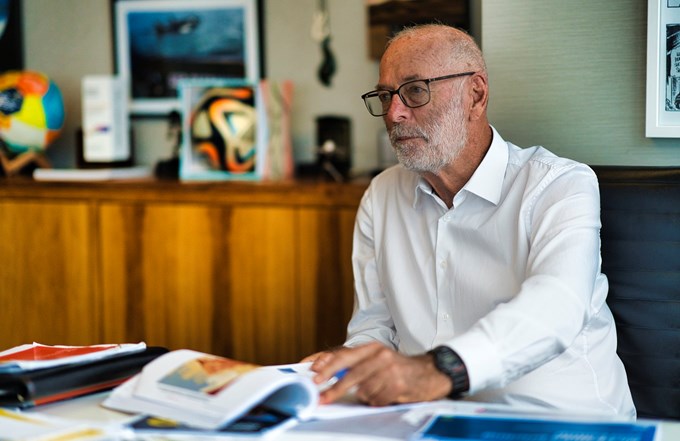A year ago, Auckland got a few lessons with the unexpected arrival of 300mm of rainfall and the associated flooding. What it showed was that at many levels the city and its inhabitants were not well prepared, and the biggest lesson was that Auckland is neither physically nor financially resilient and fixing this is the biggest issue facing Auckland Council as it prepares its long term plan which will be out for consultation in the next months.
First up MetService got the weather wrong predicting up to 100mm of rain. This is not a rainfall figure that triggers widespread alarm. I happened to be in my office at council that afternoon and although it was raining heavily no calls came in from Auckland Emergency Management (AEM) so normal activities carried on. The chief executive went home at 4pm unaware of flooding that had apparently started out west.
As mayor I had received no briefing on AEM processes when I was appointed and wasn’t even aware that their head office was at Bledisloe House, I was not on the email list for emergency alerts, nor did anyone at AEM have my phone number. The first sign to me of things being serious outside the CBD was a call from one of my tenants saying there was flooding in Otahuhu. This was quickly followed by calls from outer area councillors reporting serious flooding.
At 6.15pm, I received my first briefing from AEM. I was advised that emergency services were coping and didn’t need a declaration of emergency. Fire and Emergency supported this advice at the time. AEM did not get in touch again for another three hours. They then changed their advice at 9.16pm in a second Microsoft Teams meeting, and I duly signed the papers, but the emergency response was already under way, and the emergency powers granted by the declaration were never actually used.
Between the time Auckland Council emergency managers stood up an incident team at 4.30pm and the first briefing I received at 6.15pm, the damage had been done. It was a monumental system failure and no one individual is at fault. This is something that was completely lost on media in the plethora of disaster reporting.
I left my office around 1.30am and was in the AEM control room first thing later that morning (January 28) where the scale of the event was emerging, and the responders were coming to grips with the tasks at hand.
In the absence of any clear picture of the damage, I hired a helicopter at no cost to ratepayers and flew over the city taking with me a TV1 cameraman and Bernard Orsman from the New Zealand Herald. Through cloud cover we saw the damage but also the sponge effect of open land like golf courses which in some places absorbed water that would otherwise have flooded houses. This is what is behind council’s programme of Making Space for Water that will run for the next few years for several hundred million dollars.
We landed at Hobsonville to meet the brand-new PM who arrived courtesy of a taxpayer-funded helicopter and I joined him and others in a van to visit a badly-flooded street in Ranui. Media were everywhere but rushed straight past me and new Police Chief Sam Hoyle to the new PM. Sam joked at the time that the media would report that we weren’t there. It sadly turned out later that there was some truth to that statement.
I spent the rest of the day and the following weeks with council building inspectors, geotechnical engineers and community members mainly to learn lessons for the future, and just picking up rubbish with groups like the Student Volunteer Army.
Far too many buildings were either in the wrong place above cliffs or in obvious overland flow paths and while the media concentrated on my apparent lack of empathy I was working on how to change things so we don’t build houses on concrete slabs on the ground where the cheaper alternative of tanalised ply floors up half a metre would have saved many homes including new ones from Kāinga Ora. Nor do we want to make further mistakes that ultimately will punish the unwitting owners of these properties.
Given that in the next month things were to get a lot worse with Cyclone Gabrielle, the job of repairing, renovating or removing got a whole lot bigger, more complex and more expensive so this was where my engineering background was best focused.
Over 7000 houses were impacted in various levels and the task of dealing with these is huge. Ultimately, the ratepayer and taxpayer has ended up being the major insurer for these disasters. Even though the insurance industry has paid out over $2 billion, we’re still looking at another $2b from the public purse.
For those impacted by the floods I have the greatest sympathy and know the recovery seems very slow. Council itself suffered huge costs with over 1100 slips affecting roads and council property and the task is enormous. We just don’t have hundreds of geotechnical engineers on standby for something of this magnitude.
We need to have a fund available other than just asking ratepayers to pay more each year, especially when many are under pressure from cost of living issues, so this year council is going to ask you to consider using our two main assets, being the council’s share in Auckland International Airport and the Port, to set up a diversified investment fund so there is a pile of cash available for events like these as our two assets are facing the same physical risks that the rest of the city does. The airport flooded and the Port will do worse than the city in the event of a tsunami.
Let’s hope we all learn to do better next time, me included.


